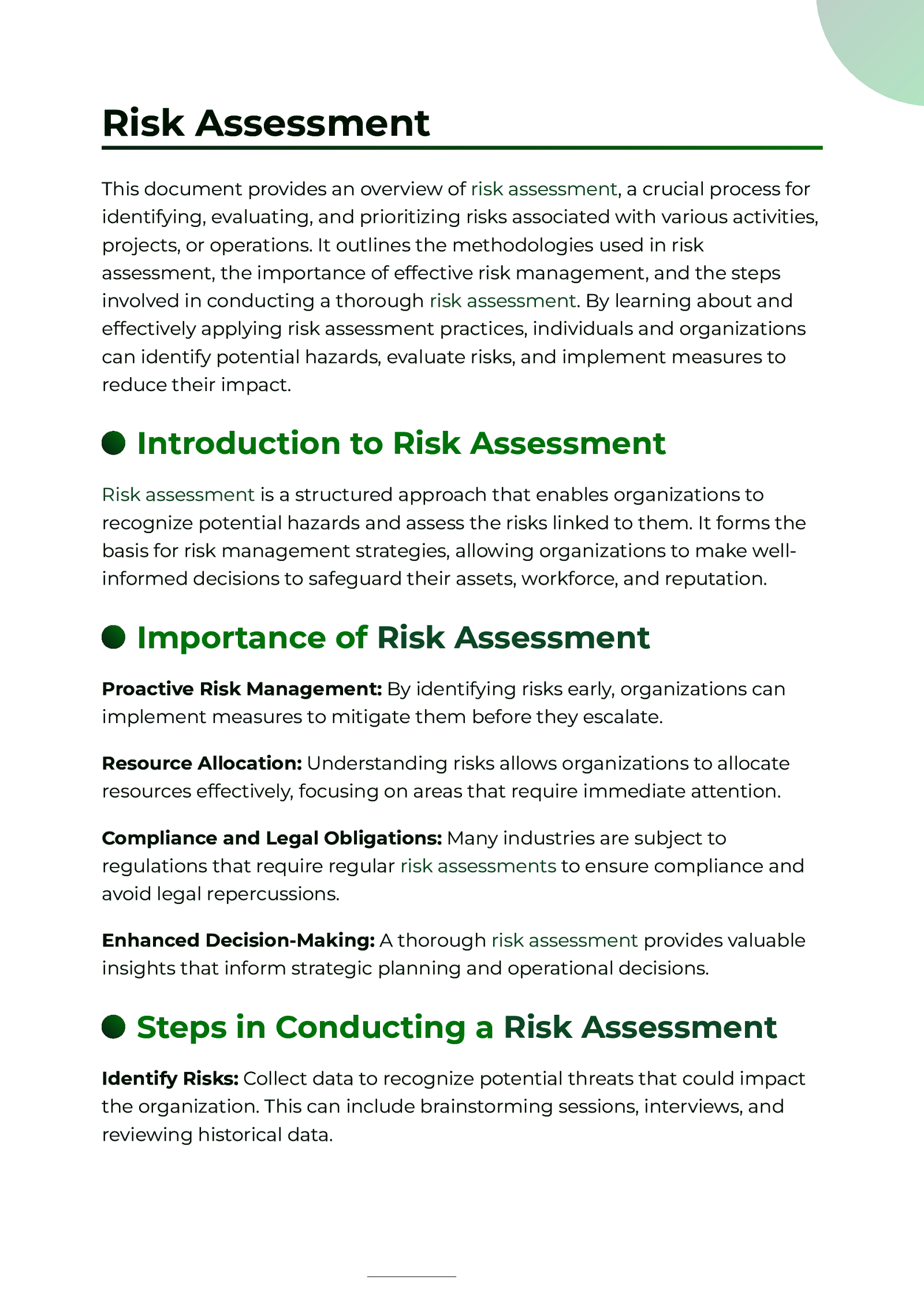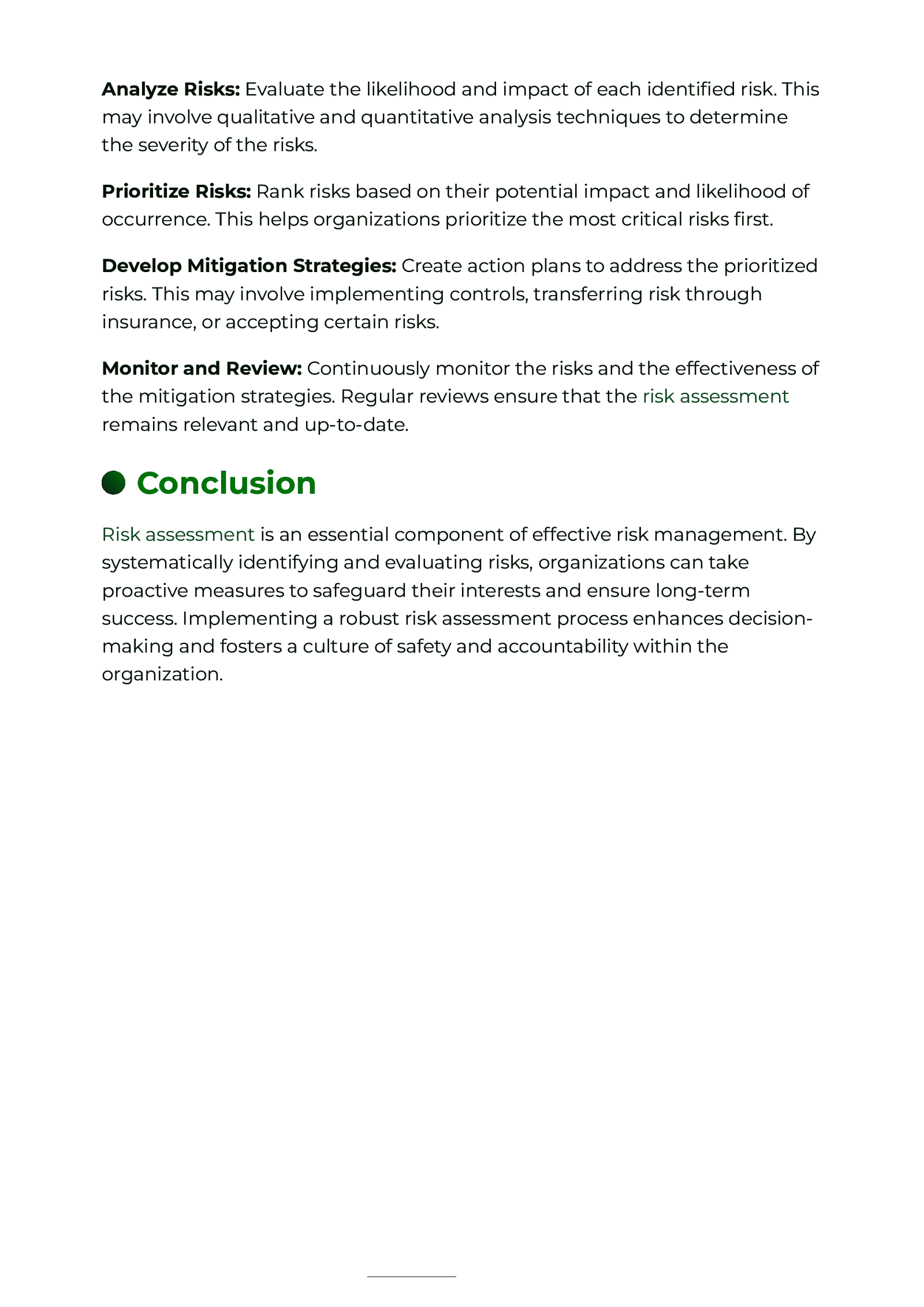Risk Assessment This document provides an overview of risk assessment, a crucial process for identifying, evaluating, and prioritizing risks associated with various activities, projects, or operations. It outlines the methodologies used in risk assessment, the importance of effective risk management, and the steps involved in conducting a thorough risk assessment. By learning about and effectively applying risk assessment practices, individuals and organizations can identify potential hazards, evaluate risks, and implement measures to reduce their impact. Introduction to Risk Assessment Risk assessment is a structured approach that enables organizations to recognize potential hazards and assess the risks linked to them. It forms the basis for risk management strategies, allowing organizations to make wellinformed decisions to safeguard their assets, workforce, and reputation. Importance of Risk Assessment Proactive Risk Management: By identifying risks early, organizations can implement measures to mitigate them before they escalate. Resource Allocation: Understanding risks allows organizations to allocate resources effectively, focusing on areas that require immediate attention. Compliance and Legal Obligations: Many industries are subject to regulations that require regular risk assessments to ensure compliance and avoid legal repercussions. Enhanced Decision-Making: A thorough risk assessment provides valuable insights that inform strategic planning and operational decisions. Steps in Conducting a Risk Assessment Identify Risks: Collect data to recognize potential threats that could impact the organization. This can include brainstorming sessions, interviews, and reviewing historical data.

